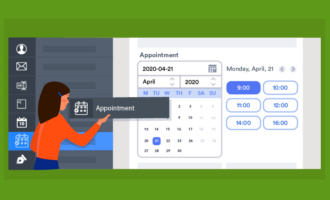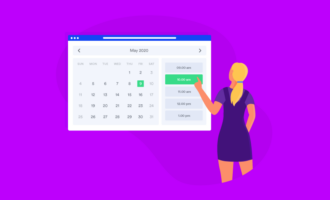With the ongoing shift to remote work and work-from-home (WFH) environments, digital calendars have become even more popular. They’re one of many digital tools — like Zoom and GoToMeeting — people are using to stay organized and productive.
There’s a long list of calendar apps that can potentially help you schedule and track appointments, meetings, and project deadlines — including Microsoft Outlook, Google Calendar, Calendly, Oncehub (formerly known as ScheduleOnce), and more.
All of these options for scheduling software mean there’s something for everyone in terms of functionality and pricing. Of course, the downside to having so many calendar apps to choose from is that it might be difficult to pick one.
To help you decide, here’s a comparison of two popular scheduling software options: Oncehub vs Calendly. Let’s see how they stack up in different categories.
Top-rated tool
Both of these business productivity options for appointments and work have similar top scores in user reviews for functionality, workflow, ease of use, customer support, and value.
Ideal business type
Both Calendly and Oncehub are made to help small businesses. But larger enterprises and nonprofits could also benefit from using these schedulers.
Operating system
Both are web-based scheduling platforms that you can use on mobile devices, but only Calendly has an app. Oncehub and Calendly both work with Windows and macOS.
Appointment reminders
With both solutions, it’s possible to send email or SMS appointment reminders, depending on the type of meeting you’ve scheduled. While this functionality seems similar on both platforms, Calendly offers some additional meeting reminder features.
Pricing
Although both tools are subscription-based software solutions, Calendly costs less than Oncehub. Both offer a free trial and free entry-level plans.
Calendly offers additional plan levels — Standard, Teams, Enterprise — and Oncehub has Schedule, Route, Engage, and Enterprise plans, so both can accommodate different business needs, team sizes, and budgets.
Calendly tends to offer slightly less value because some of the functionality it provides is already available with free programs like Google Workplace and the web version of Microsoft Office or through various integrations.
Pros and cons
There are a number of pros and cons to both Calendly and Oncehub.
Calendly
Calendly boasts an easy-to-use interface and scheduling automation features that vastly improve the appointment process.
Rather than having to resort to phone calls and emails to schedule an appointment or meeting, users log into the app and share their Calendly link. This gives others the ability to see their calendar and easily schedule an appointment.
Calendly also integrates with Google Calendar, iCloud, Office 365, and Outlook. Other integrations include Mailchimp, Salesforce, Zapier, and Slack. And you can connect Calendly to PayPal and Stripe to accept payments.
Calendly also lets you schedule meetings between individuals or among group members, easily customize meeting times, and automatically detect time zones for meeting attendees.
However, Calendly’s features tend to be more basic compared to Oncehub and other scheduling apps.
Oncehub
The pros of the Oncehub platform are its simple navigation, a clean and easy-to-read interface, and its convenience. It’s ideal for larger teams that have varied schedules or need to manage different event types.
For example, Oncehub can help organize event packages or a series of appointments, such as four-day webinars, conferences, or classes. The packages allow the user or attendee to select three or more different dates within one event, making the process convenient and easy — and improving the overall user experience.
Other benefits of this scheduler include easy meeting reports and integrations with Keap (formerly Infusionsoft), Zapier, and Salesforce.
On the other hand, Oncehub can be complicated to set up and use, so it might increase the time an administrator spends on configuration and deployment.
Overall conclusions
In comparing Oncehub vs Calendly, it seems like Calendly might work better for B2B environments and business meetings. The limited paid features make it more useful for small businesses and startups as opposed to larger organizations. Calendly is easy to manage when one person is in charge of the back end but gets more complicated when you add multiple users.
Oncehub is a good team solution for B2B and B2C companies, especially when you have to navigate multiple schedules and events. It also boasts more value for the price and is easy to use.
A scheduling solution for your business needs
Along with these scheduling software options, your small business and team can use Jotform’s appointment scheduling features, which allow you to set up an appointment field in your form, and its calendar view within Jotform Tables. Not only is Jotform user-friendly and secure; it’s also affordable, with four levels of paid plans and a free Starter plan.
































































































Send Comment: